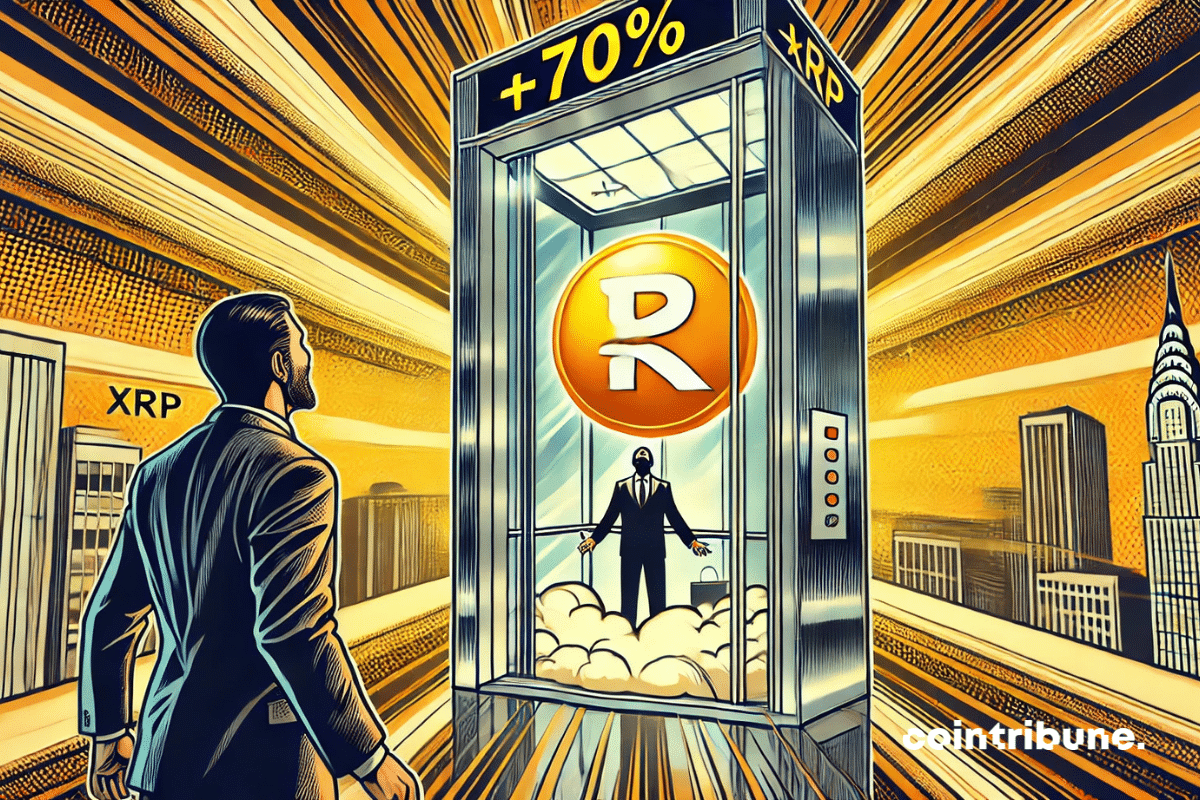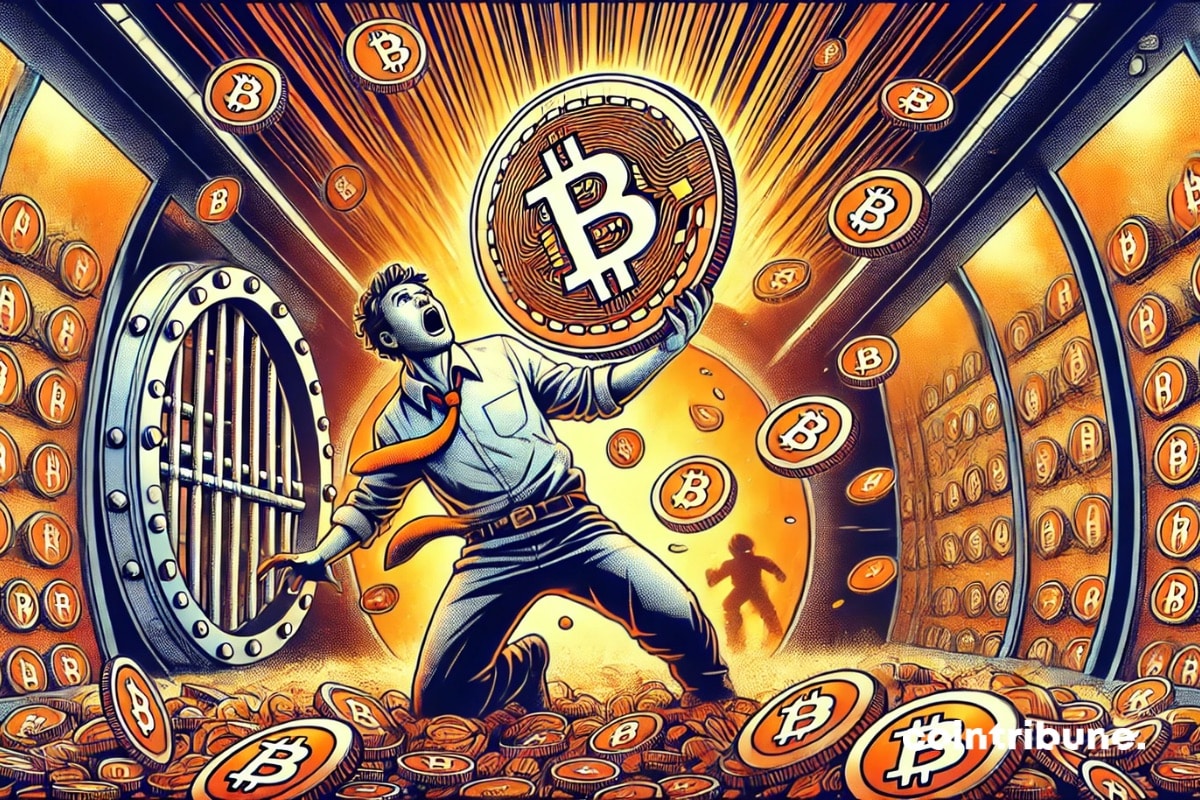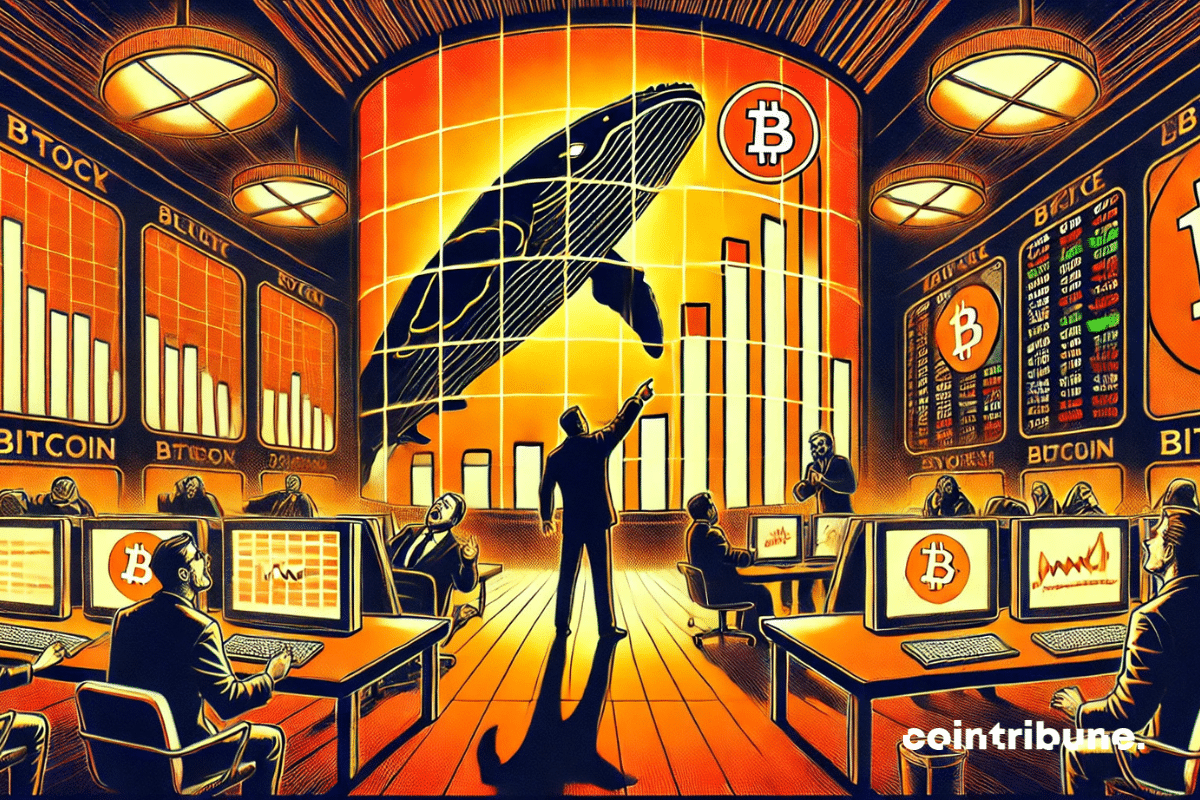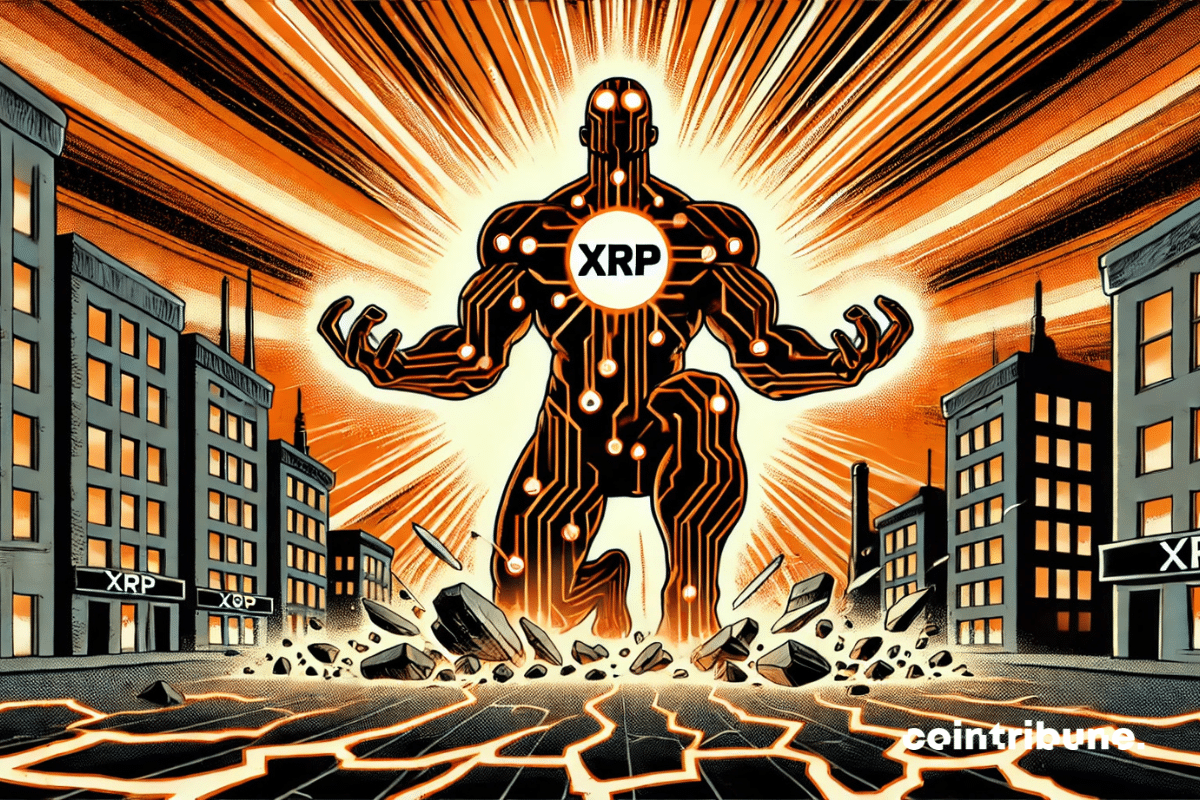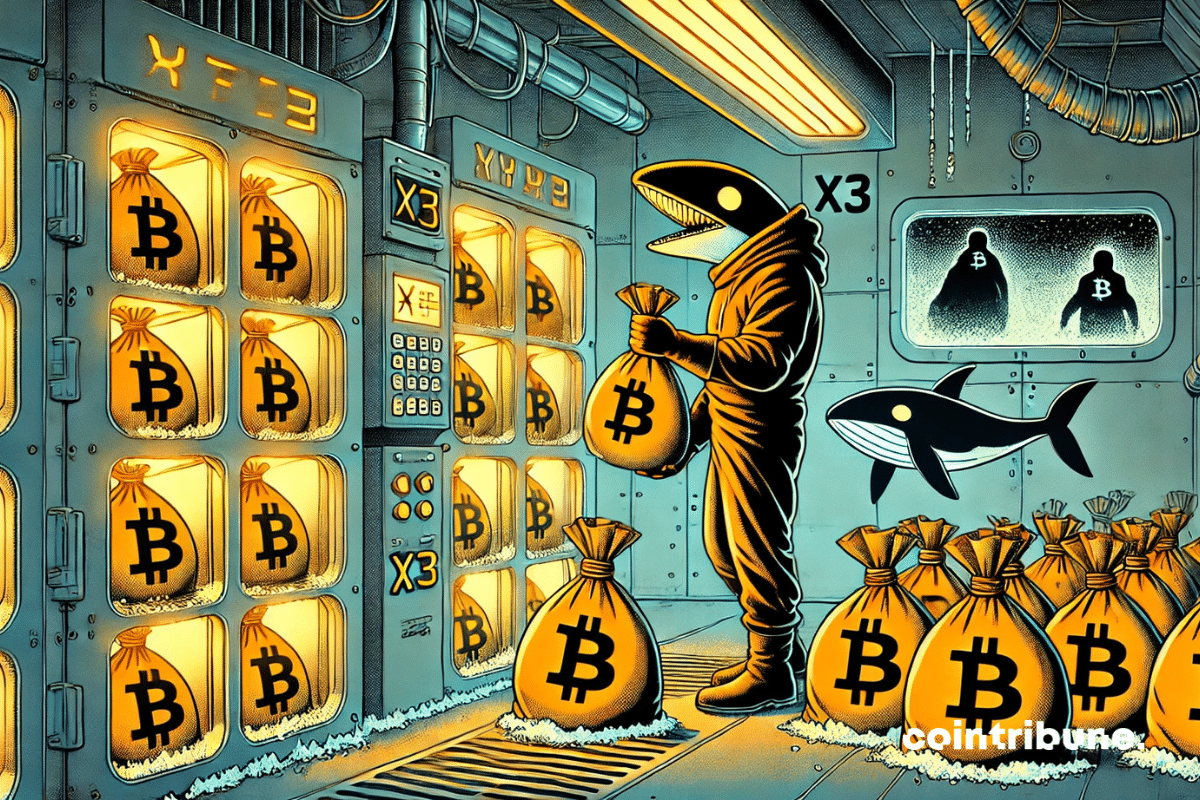Bitcoin ETFs based in the United States have recorded their largest daily inflows since January, as the crypto market regains its strength after a tough period.
Crypto News
The tide is turning for traditional banks. According to a recent report, Deutsche Bank and Standard Chartered are currently exploring expansion opportunities in the crypto sector in the United States. This information, although not confirmed by those involved, is set against a backdrop of rapid transformation of the American regulatory environment, increasingly favorable to digital assets.
In January 2025, the crypto industry made massive donations to Trump's investment fund. A month later, the SEC miraculously dropped its lawsuits against those same donors. Coincidence or monetized political influence? The line between financial support and regulatory favoritism has never seemed so blurred.
Under pressure for several months, XRP is back on the market's radar. After a 40% decline from its peak of $3.40, the asset may be about to undergo a strategic turning point. Coinbase has just received the green light from the CFTC to launch XRP futures contracts, paving the way for a new phase of institutional legitimacy. In an environment where every technical or regulatory signal can tip the scales, this announcement re-ignites attention on this cryptocurrency.
As Bitcoin hovers around 85,000 dollars, Strategy, the company led by Michael Saylor, continues its ambitious accumulation strategy. In one week, the company invested over 550 million dollars to bolster its already colossal position in the queen of cryptos.
As the crypto market undergoes a phase of consolidation, major bitcoin holders – commonly referred to as "whales" – are significantly strengthening their positions, constituting one of the many bullish signals emerging at the end of April 2025.
XRP is about to emerge from its slumber. An extreme tightening of the Bollinger Bands alerts analysts: a volatility explosion is coming. The question remains in which direction.
Bitcoin surpasses 87,000 dollars again, dragging along altcoins BNB, SOL, and XRP. This bullish movement rekindles debates about its status as a safe haven asset, amid a backdrop of global economic instability.
Bitcoin is currently navigating through troubled waters. Below the symbolic threshold of $90,000, the landscape turns red for recent holders, while crypto veterans stay the course. Between technical corrections and discreet accumulation by institutions, the market sketches a complex map: that of a fragile balance between latent losses and tenacious confidence. A dive into the meanders of an asset that refuses to yield to fatalism, despite the storms.
Bitcoin is regaining strength by surpassing $87,000, marking its strongest increase since the end of March. This rise comes in an uncertain economic context, where gold and BTC are aligning as safe-haven assets against a weakened dollar. Is a bullish breakout underway?
Michael Saylor and his company Strategy continue their offensive on bitcoin. While the company reports more than $9 billion in unrealized gains, its founder hints at a new massive purchase. A strategy that could, according to some analysts, propel BTC up to $300,000.
According to a recent analysis by Binance Research, the upcoming Ethereum upgrades, Pectra and Fusaka, could redefine the network's capabilities in terms of scalability and crypto payments.
In the volatile arena of cryptocurrencies, where every signal can sway the market, XRP is drawing the spotlight. While volumes are dwindling, its technical indicators show a bullish turn. The imminent formation of a golden cross could kick off a rally as early as July, providing a counterpoint to current trends. In a context of widespread caution, this setup is capturing the attention of traders seeking confirmation.
The digital euro, a future digital currency issued by the European Central Bank, is set to profoundly transform the European monetary landscape. According to the ECB, this CBDC could replace up to 50% of banknotes in circulation and significantly impact bank deposits! Thus marking a strategic turning point for Europe in the face of digital assets.
Hayden Adams, founder of Uniswap, believes that Solana is currently the best blockchain to scale decentralized finance (DeFi) at the layer 1 level. This stance reignites the debate on the limitations of Ethereum's modular model.
On April 20, 2025, Dogecoin holders celebrate the now traditional Doge Day, a festive day born in 2021 alongside the global cannabis day. While the DOGE community remains as enthusiastic as ever, a major event could soon redefine the landscape of this iconic crypto: the possible approval of a Dogecoin ETF by the U.S. SEC.
Bitcoin and Ethereum users can finally breathe easy: transaction costs on the two main blockchains have dropped by more than 90% compared to the previous year. This major change reflects a calming of network activity, but also a notable improvement in operational efficiency.
In the crypto world, the "unit bias" leads many investors to favor cheap altcoins over Bitcoin. According to Samson Mow, this mistaken perception distorts investment decisions and fuels an illusion of value. BTC dominance could thus explode far beyond forecasts!
Despite signs of sustained activity, Shiba Inu (SHIB) is sinking into a downward spiral of underperformance. Contrary to the rebound seen in other altcoins, the token shows a historically low profitability rate, revealing a deep imbalance in its market structure. The majority of wallets remain in the red, even as trading volumes explode. This stark contrast between apparent excitement and massive losses raises a simple question: what is really happening behind the numbers?
Bitcoin's dominance in the crypto market is approaching a historical resistance level that has previously triggered major reversals. According to a technical analysis published on TradingView, BTC's market share could collapse to 40% in the coming months, potentially paving the way for a new altcoin season.
When Robert Kiyosaki speaks, the markets listen. The author of "Rich Dad, Poor Dad," an iconic figure in alternative finance, predicts a bitcoin worth 1 million dollars by 2035. In a global climate weakened by debt, inflation, and mistrust towards institutions, his statement fuels debates about the safe-haven value of cryptocurrencies. Prophetic vision or alarmism? The future of bitcoin may already be written between the lines of this announcement.
While the crypto market oscillates without a clear direction, some internal dynamics are stirring tensions. This month, the Pi Network project is preparing to inject a massive amount of tokens into the market. This operation is being closely watched, as its scale could worsen the selling pressure on the price of Pi, an already fragile asset. The chosen timeline, combined with alarming technical signals, outlines a scenario to be monitored very closely.
The $TRUMP token, once a rising star, plummets 90% with the unlocking of 40 million tokens, revealing the risks of a controversial presidential crypto strategy.
While markets struggle to regain their momentum, a silent accumulation of bitcoin by the largest holders, the famous "whales," is reshuffling the cards. By absorbing much more than the newly issued supply, these players are changing the market balance. This discreet but massive movement reignites speculation: is it the beginning of a new bullish rally, or just a strategic repositioning out of sight?
As uncertainty grips global markets, a strong signal emerges from the Bitcoin network: more than 170,000 BTC, nearly 14 billion dollars, have left dormant wallets. Such a rare and massive movement reactivates the specter of high volatility. In response to this on-chain shock, investor strategies are fragmenting between distrust and accumulation.
Ethereum could soon find itself in a technical deadlock as the growth of layer 2 solutions threatens to saturate its processing capacity, despite planned improvements.
Like a seismograph recording the first tremors, CryptoQuant sounds the alarm: Bitcoin is preparing for a major shakeup. According to the platform, 170,000 BTC, held for three to six months, have started to move on the chain. A historic signal, often a precursor to market storms. Between fleeting panic and anchoring strategies, the market is fracturing. An analysis of an alert that could redefine the coming weeks.
Despite a recent rebound above the psychological threshold of $0.60, Cardano (ADA) remains under bearish pressure. The flagship crypto of the Cardano ecosystem temporarily reclaimed this critical zone, but market data and technical analysis suggest that sellers maintain the short-term advantage.
The escalation of trade tensions between the United States and China is once again disrupting global financial markets. Cryptocurrencies and tech stocks are bearing the brunt of the impact from the new tariff measures announced by the Trump administration, which has imposed duties reaching up to 245% on certain Chinese imports.
This Friday, while stock markets close for "Good Friday," the crypto market remains tense. Over $2.2 billion worth of options on Bitcoin and Ethereum are expiring: a massive volume that captures traders' attention. This technical expiration, although expected, occurs in a climate of significant uncertainty, between bullish signals, extreme pain levels, and pressures related to U.S. monetary policy. While the options expire, the risks remain fully intact.



